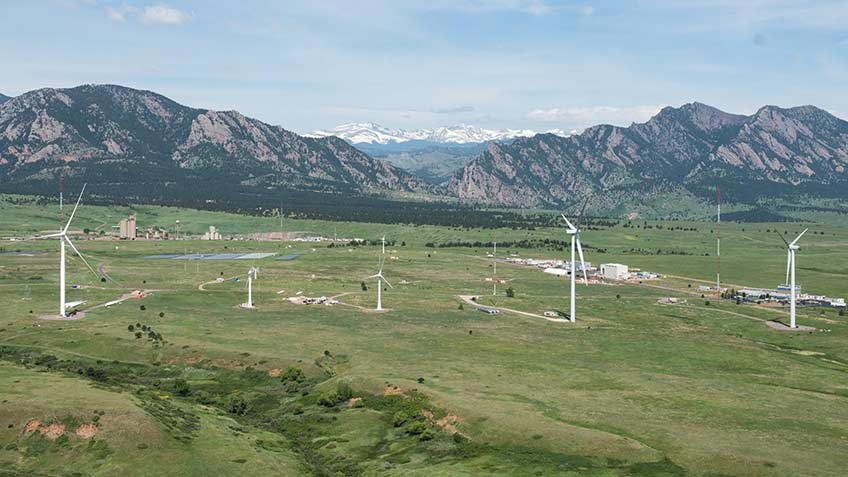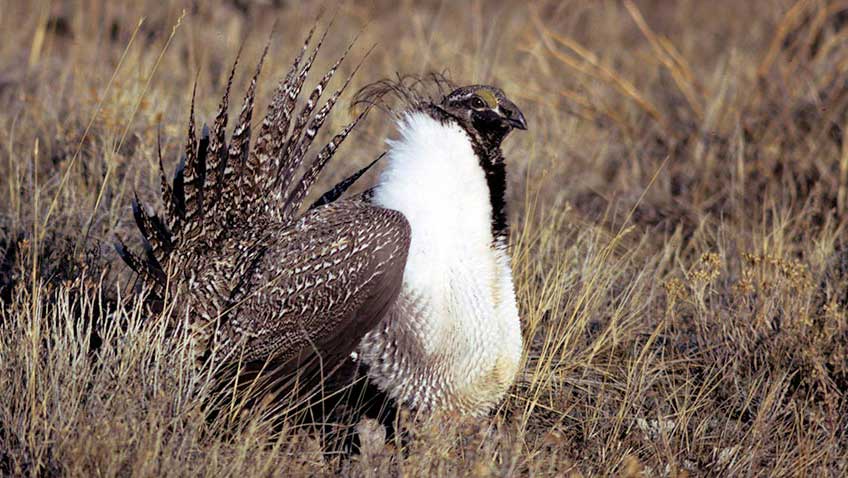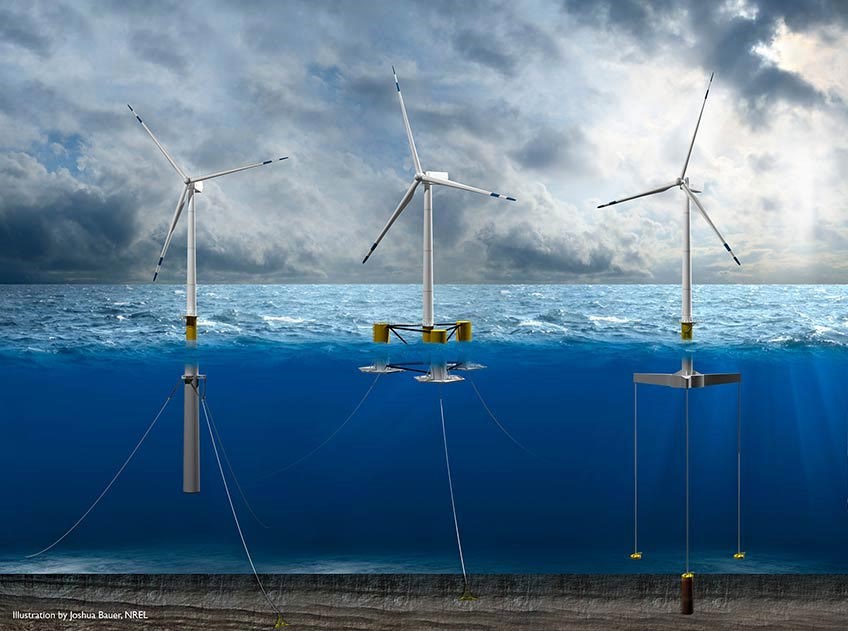The Leading Edge: September 2020 Wind Energy Newsletter
In this edition, we look at a new open-source program for modeling large, flexible turbine blades; provide announcements of interest to manufacturers; and invite students and professionals to learn more about wind power.
News Stories
This video shows how OLAF uses filaments to represent a turbine's wake. OLAF is programmed to generate realistic representations of the wakes of large, flexible turbine blades, providing users an alternative to traditional aerodynamic models. Video by Kelsey Shaler, NREL
New Open-Source Modeling Tool Enables Design of Large, Flexible Wind Turbine Blades
NREL recently released cOnvecting LAgrangian Filaments (OLAF), a new wake module included in NREL's OpenFAST wind turbine simulation tool. Programmed to generate realistic representations of the wakes of large, flexible turbine blades, OLAF can also run on a personal computer. Not only that—but it's also open-source, enabling designers throughout the wind industry to model their own designs more accurately and predictably, refine the software collaboratively, and reduce wind turbine development costs.
NREL Seeks Turbine Manufacturer Partners for Distributed Wind Research
In an effort to advance distributed wind energy innovation, NREL invites manufacturers to express their interest in installing distributed-scale wind turbines as research hardware at NREL's Flatirons Campus, located south of Boulder, Colorado. NREL seeks 100-kW or smaller distributed wind turbines to conduct research focused on the integration of wind energy in grid-connected and microgrid applications.

Collegiate Wind Competition Now Accepting Proposals for 2022 Event
NREL Selects U.S. Manufacturers To Develop Next-Generation Distributed Wind Technologies
NREL has selected seven U.S. manufacturers to receive U.S. Department of Energy Competitiveness Improvement Project awards, which are designed to accelerate deployment of small- and medium-sized wind turbines across the country and lower the cost of energy from distributed wind. NREL manages the program on behalf of the U.S. Department of Energy.
On the Radar
Webinar Series Reveals Techniques for Keeping Wildlife Safe
The potential impact on local wildlife is an important consideration when planning and running a wind power plant. NREL and Defenders of Wildlife recently launched Wildlife and Wind Energy: Considerations for Monitoring and Managing Impacts, a series of nine training webinars designed to familiarize attendees with applied techniques for monitoring, permitting, reporting, and researching land-based wind energy and wildlife interactions. Experts from government and nongovernment agencies, private industry, and academia will discuss important background information and address research and regulatory considerations related to wind energy projects—from early planning to full operation.

The next webinar in the series, Grouse – Considerations for Developing Wind Energy in Grouse Habitat, will be held on Wednesday, Sept. 16, at noon Mountain Daylight Time.
Wind Energy Science Leadership Series Moves from Atmospheric Science to Increasing Wind Turbine Rotor Size
Held Aug. 31, the most recent Wind Energy Science Leadership Series webinar, Atmospheric Science for Wind Energy Research, covered current research and industry trends for describing and predicting complex wind dynamics and how weather patterns impact wind power plants.
On Oct. 7, the series will shift its focus to an examination of the growing size of wind turbine rotors, which has contributed to substantial reductions in the cost of wind energy. Led by Big Adaptive Rotor project co-lead Nick Johnson, panelists will discuss trends toward turbines with large rotor sizes and the science, engineering, logistical, and manufacturing challenges that need to be overcome to further drive down wind energy costs. For more details about the series, visit the Wind Energy Science Leadership Series.
Downwind: In Case You Missed It
A New Strategic Vision for Floating Offshore Wind
As reported by offshoreWIND.biz, a recent NREL study on floating offshore wind identifies barriers that must be overcome to bring down the overall cost of energy produced and then outlines a vision for an integrated systems approach with the potential to significantly improve the market feasibility of floating offshore wind power plants.

Publications
Continued Results from a Field Campaign of Wake Steering Applied at a Commercial Wind Farm – Part 2
This Wind Energy Science journal article presents the second phase of study results from a 16-month field campaign investigating the ability of wake steering to increase the energy production of turbines within a section of a commercial wind farm. In this phase, researchers implemented wake steering on two turbine pairs and compared results with the latest FLOw Redirection and Induction in Steady State (FLORIS) model of wake steering. While results showed an overall energy increase in both pairs when steering is applied and match FLORIS predictions, the presence of a secondary steering phenomenon—the wake of a nonsteered turbine—could be critical for the design of wind farm controls for large arrays.
ORBIT: Offshore Renewables Balance-of-System and Installation Tool
This report describes NREL's newly released model for assessing the balance-of-system costs of an offshore wind power plant. As a medium-fidelity, bottom-up, design trade-off tool that computes balance-of-system costs for a theoretical project, ORBIT can be used to evaluate the impact of technological and process innovations relative to baseline project scenarios.
A Cross-Sectional Aeroelastic Analysis and Structural Optimization Tool for Slender Composite Structures
This Composite Structures journal article presents Structural Optimization and Aeroelastic Analysis (SONATA), a fully open‐source framework for the parametric cross‐sectional analysis and design optimization of slender composite structures such as helicopter or wind turbine blades. Using SONATA, researchers analyzed a fully resolved, highly flexible wind turbine blade and recovered stresses, strains, and deformations from loads derived through coupling with aeroelastic analysis. Results showed that SONATA accurately analyzes and optimizes slender composite structures on a high‐fidelity level that is close to a three‐dimensional finite element model.
Share

